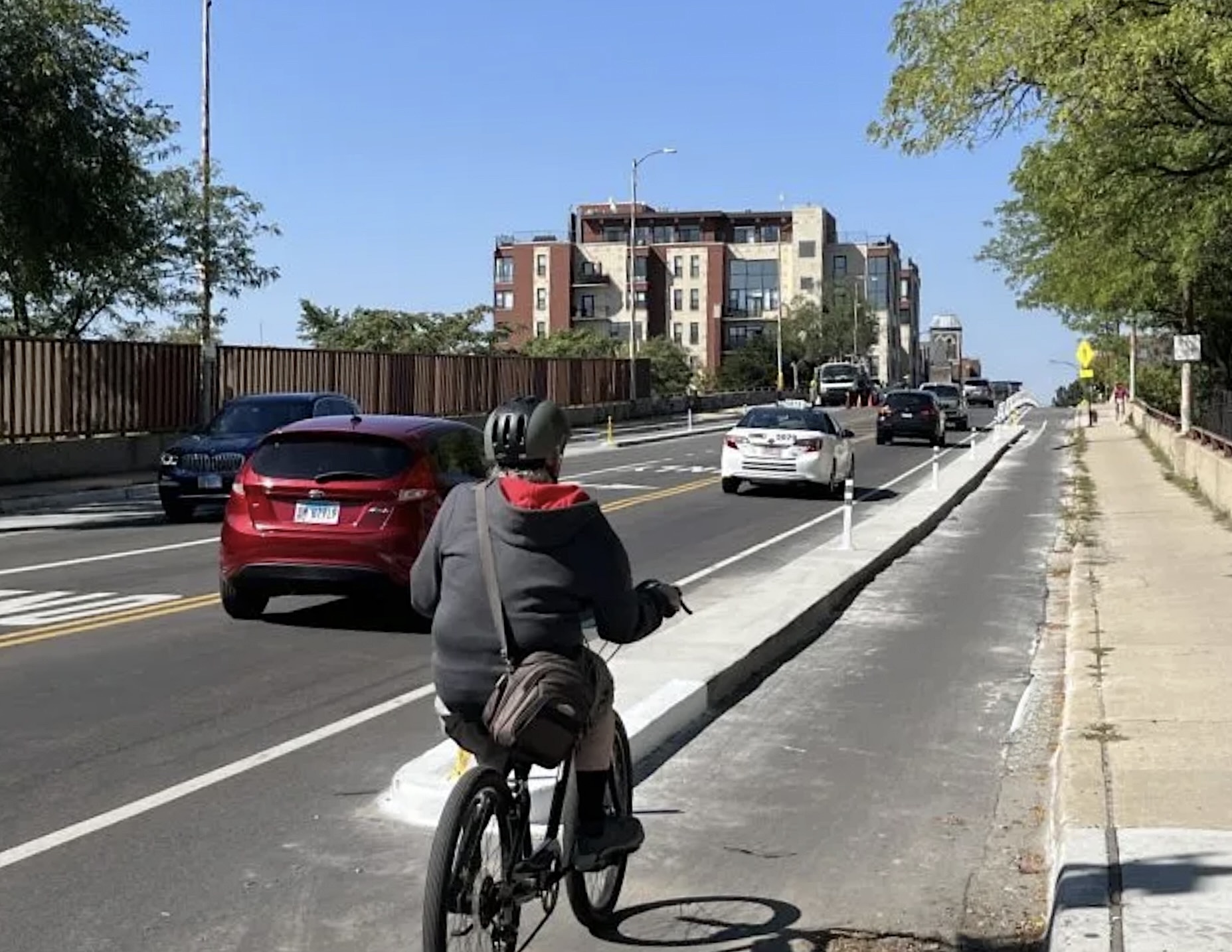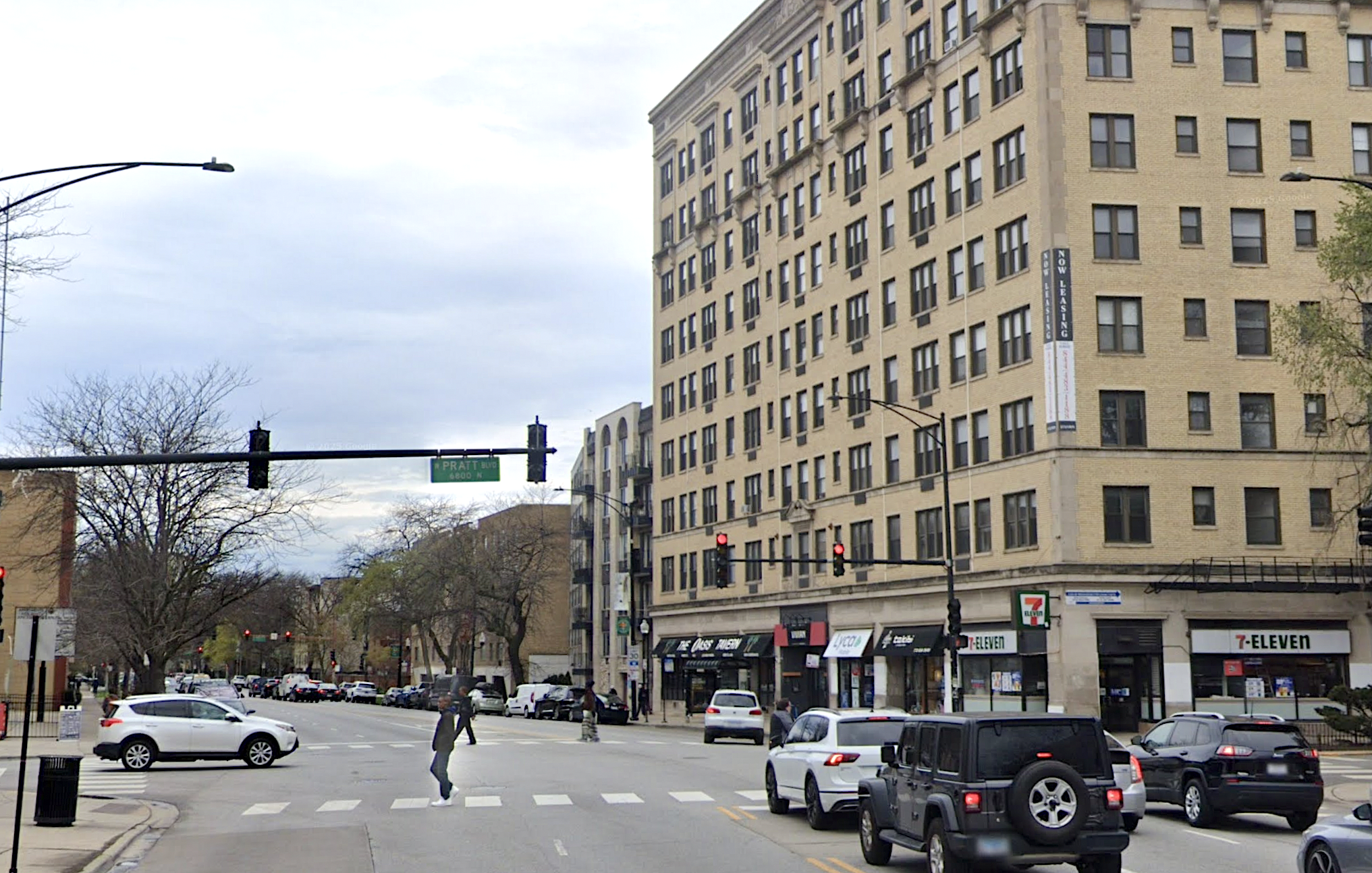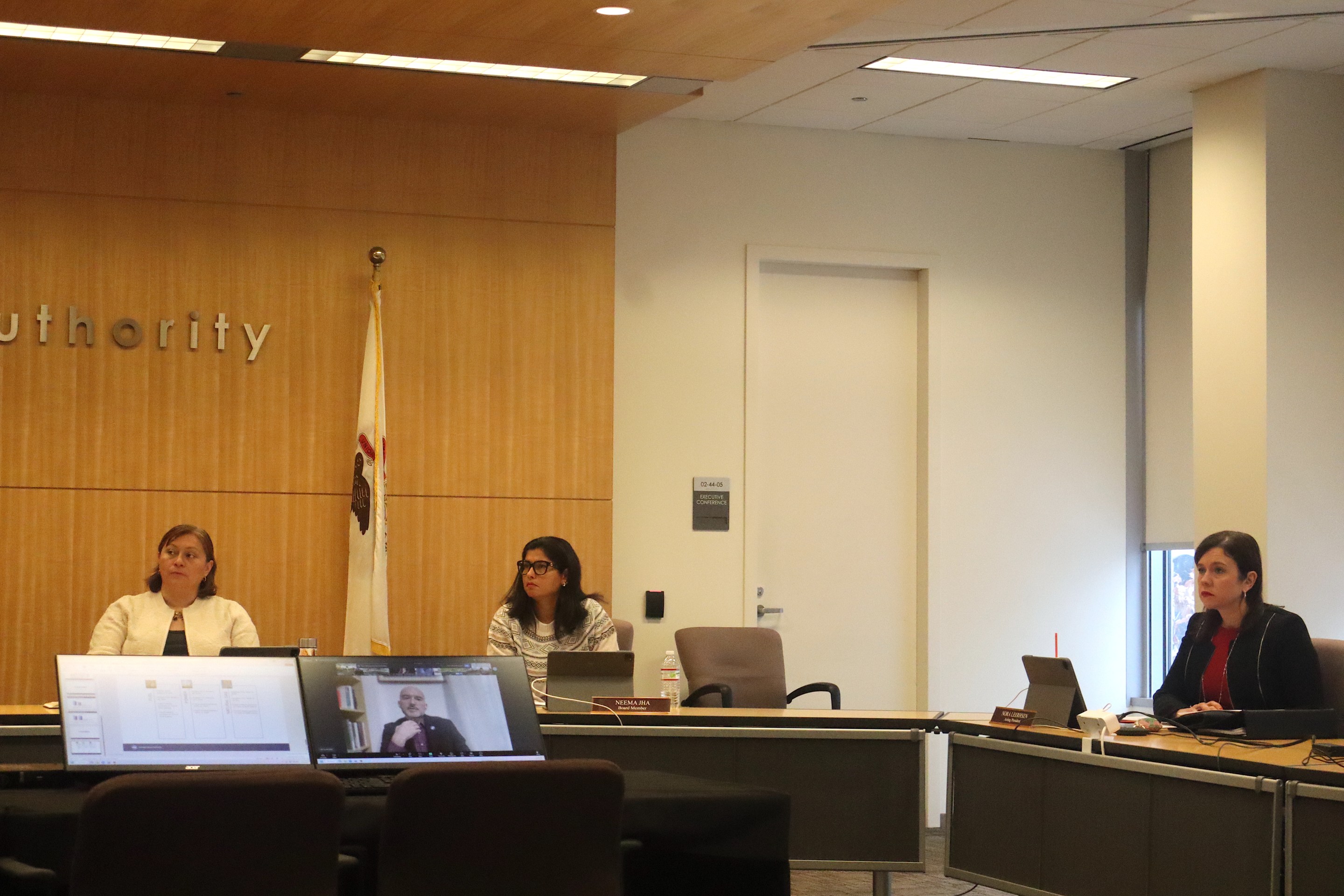
Year after year, Chicago scores – many say unfairly—near the absolute bottom of large U.S. cities for bicycle friendliness in People For Bikes’ global rankings. But according to recent data, Chicagoans might disagree with PFB's assessments, or at least are undeterred from taking trips by pedal power. A new study shows that Chicago has led the nation in bike ridership growth over the last four years.
The report, issued last week by the Chicago Department of Transportation and data analytics firm Replica, states that bicycling in Chicago grew a whopping 119 percent in the last four years. That's the largest increase among the ten largest U.S. cities. According to the study, Chicagoans are increasingly taking bicycles crosstown – on trips that span four or more neighborhoods – and within their own neighborhoods to go shopping, dine out, recreate, and travel to school and work. Bike journeys to workplaces saw a modest increase, just 8 percent. But cycling to a restaurant grew by a full 93 percent, and the number of shopping trips by bike ballooned by 117 percent.

The analysis comes one year after the release of CDOT’s Chicago Cycling Strategy, a methodology for stitching together the city’s scattershot system of bikeways. That document focused on closing gaps between existing protected bike lanes to create a connected crosstown grid, while partnering with community members to build out smaller bike networks within neighborhoods. It called for the installation of an ambitious 150 miles of bikeways, 80 of which would be "low stress". These include off-street trails, protected lanes on main streets, and "Neighborhood Greenway" side street routes that are intended to be more comfortable for riders of all experience levels.
Happily, this plan was put in action right away. Under the leadership of CDOT’s Complete Streets czar Dave Smith, a record number of protected bike lanes and low-stress greenways were installed last year with more on the way this summer.
One express goal of the Chicago Cycling Strategy was to encourage more people to ditch their cars for bikes to take short, local trips. According to the new report, that approach seems to be working. Neighborhood-level trips saw the the highest increase in numbers, up 113 percent.
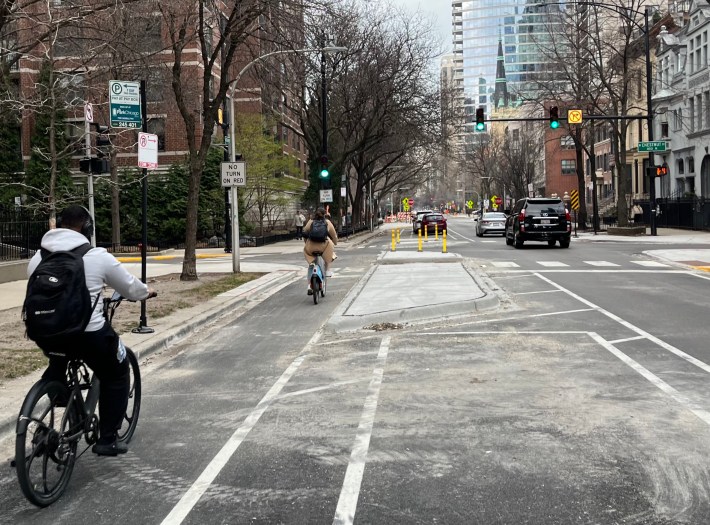
Alex Perez, advocacy manager at the Active Transportation Alliance, agreed that the new bikeways are having a positive impact. "We are excited to see numbers backing up infrastructure improvements over the last few years. Especially seeing trip increases within neighborhoods. People are taking trips in their neighborhoods they wouldn’t have done four or five years ago."
However, Perez believes there’s more at play than simply "If you build it, they will come." "It’s part of the story," he said, "The other part of the story is traffic. People are seeing that if you have a short commute, it’s more convenient to ride your bike, especially during warmer days. There’s a lot of construction on the highways. People getting fed up with traffic."
The report includes a neighborhood map showing the percentage change in bicycle trips citywide. Almost every corner of the city had a more than 40 percent increase of biking, except for a few neighborhoods bordering the far Northwest, far West and far South Sides. The largest geographic area with the biggest proportional increase in riding – over 170 percent – was on the South Side, in neighborhoods with sparse cycling infrastructure. The report also states that there was a 166 percent increase in people of color riding bikes.
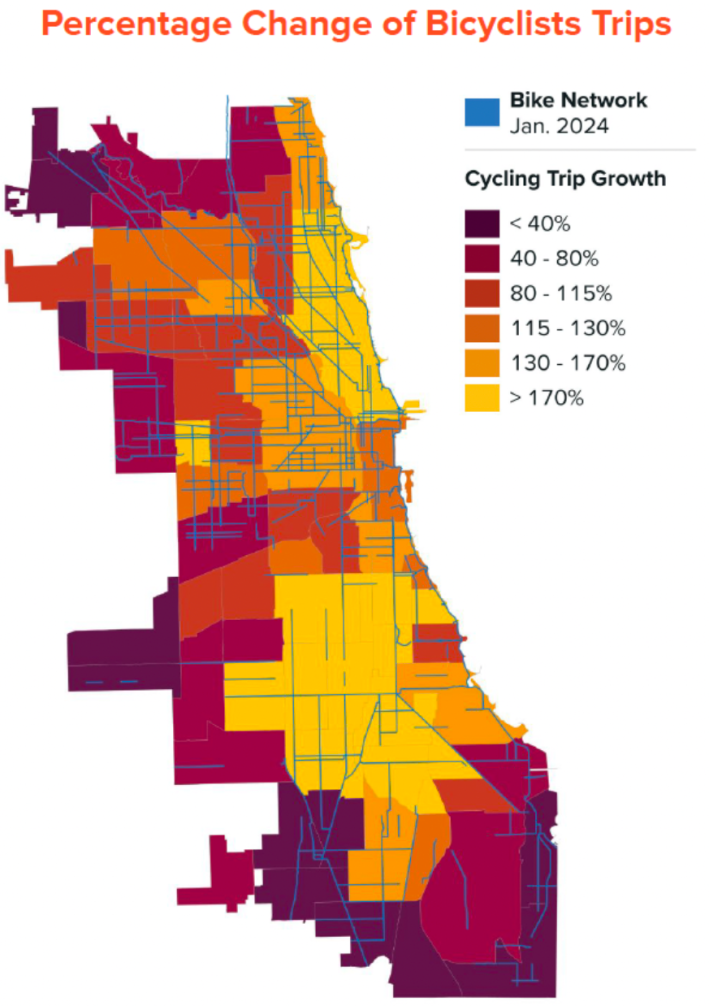
Jose Manual Almanza, a spokesperson for the mobility justice nonprofit Equiticity, said that more targeted infrastructure investment in communities of color is needed. "CDOT’s data shows a clear link between infrastructure improvements and increased ridership,” he wrote in a statement. "Extending these improvements to racially marginalized underserved neighborhoods, alongside financial support for mobility devices, will foster an inclusive cycling culture and boost usage in Black and Brown neighborhoods."
Almanza emphasized the need for access to free and affordable bikes so low-income residents can take advantage of the new infrastructure, along with other resources "including bike shops, bike libraries, community programs, safety education, and mobility hubs" to "sustain ridership growth and ensure the long-term success of biking initiatives."
In 2022, CDOT introduced a free bike distribution program, dubbed Bike Chicago, that aims to give away 5,000 bicycles over four years to low-income residents who "face higher mobility hardship." According to the Bike Chicago website, the department received over 19,000 applications for free bikes in the first year of the program. It’s worth noting that the large swath of the South Side with the recent big jump in biking also, according to map on the Bike Chicago website, experiences some of the highest mobility hardship in the city.
The CDOT report is evidence that what advocates have been saying for years is true: Safer biking infrastructure does encourage more people to ride. It’s exciting to see how quickly these improvements have translated into biking growth and hopefully the data makes the case for continued investment, especially in areas with the least access to safe bike routes.
In the meantime, go ahead People for Bikes, rank us 161 out of 163 again. See how we roll.

Did you appreciate this post? Please consider making a tax-deductible donation.
